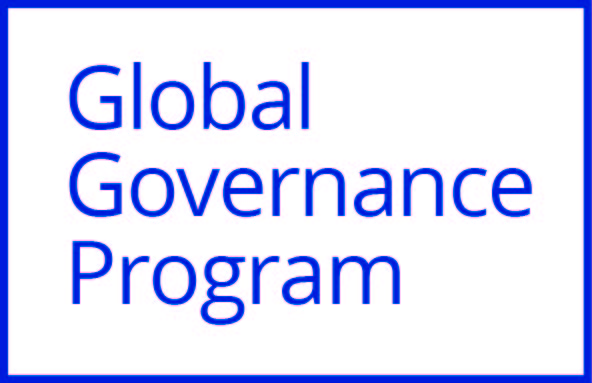
Global Governance Program
Including the G7 Research Group, G20 Research Group,
BRICS Research Group and the Global Health Diplomacy Program

 |
Global Governance Program |
 |
Governing Through Goals:
The G20 and UN 2030 Agenda Sustainable Development Goals
Brittaney Warren, G20 Research Group
December 6 2019
Today, multilateralism is fraying, as the world's largest and most influential country, the United States, has pulled away from and directly attacked the ideas and core international institutions of the multilateral order. This attack includes refusing to appoint members to the World Trade Organization's (WTO) dispute resolution appellate body, soon rendering the organization incapacitated, and withdrawing the United States from the United Nations 2015 Paris Agreement on climate change. Domestically, the U.S. administration, under President Donald Trump, has rolled back environmental policies, threatened marginalized groups, including immigrants and women/LGBTQ2+, and has given tax breaks to the wealthiest.
These actions work against the efforts and gains for modern, more inclusive multilateralism made in 2015 when the international community came together and endorsed five major agreements to guide the global post-2015 development, environment and climate agenda. Two of these agreements built on and in some ways changed past approaches to global governance. This included the Paris Agreement that adopted a bottom-up, country-led approach instead of the former ineffective top-down approach, and the 2030 Agenda's 17 Sustainable Development Goals (SDGs) and 169 targets that replaced and expanded the 2005–2015 Millennium Development Goals (MDGs).
The SDGs kept the central goal of the MDGs to eliminate poverty, but went beyond this to place equal importance on the three dimensions of social, economic and environmental progress. Yet the biggest difference in approaches is the shift from the siloed approach of the MDGs to the intended interconnected approach of the SDGs (Kanei, Bernstein, Biermann et al. 2019). Indeed, there are many interlinkages between the SDGs and their targets. This approach is more aligned with earth systems, where there is a high degree of connection and interdependence — the health of ecosystems as a whole depends on the health of its component parts. The SDGs do a better job than the MDGs of recognizing that humans are part of this system too, and that human systems must operate within planetary boundaries and are intertwined with earth systems. While certainly not perfect, the SDGs offer a new avenue or approach to governance and the opportunity to simultaneously promote solutions to economic, social and environmental ills.
For example, SDG 1 to reduce poverty includes a target to ensure equal access, between men and women, to ownership and control over land. Achieving or complying with this commitment would simultaneously increase compliance with SDG 5 on gender and SDG 2 on hunger, if control over land includes productive farming land. SDG 1 also includes a target to build resilience of the poor to climate shocks. This supports SDG 13 on climate change and SDG 11 on sustainable cities and communities. It is possible to pick any of the 17 SDGs and identify how compliance with a given target would have the co-benefit of increasing compliance with others.
This concern with synergies and co-benefits is a concept that has been discussed in evaluations of the performance of the Group of 20 (G20) (see for example Kirton 2013). The G20's agenda has significantly expanded since it was created at the level of finance ministers and central bank governors in 1999 and elevated to the leaders' level in 2008. The G20 is considered the world's premier economic forum. Its agenda at its creation reflected this, and still does so today too, if to a lesser extent. At the beginning, at the leaders' level, there were very few socioeconomic or environmental commitments made relative to economic ones, as the leaders were focused primarily on containing the global financial crisis proliferating then. Yet as time passed, and more crises arose, including ones related to the global economy but not exclusively economic, more subjects appeared on the G20 agenda. Since 2015 this has included the SDGs. A big spike in support for them came under the leadership of Germany in 2017 when G20 leaders endorsed the Hamburg Update: Taking Forward the G20 Action Plan on the 2030 Agenda. Of the nine documents released at this summit, including the overarching declaration, the Hamburg Update had the most commitments in it, with 186 in all.
A central question regarding the G20's agenda expansion is whether this stretches its leaders' attention too thinly, leading to lower compliance with its commitments or if it instead allows for opportunities for synergistic interlinkages between issue areas and higher compliance as a result (Kirton and Larionova 2018). A similar question can be asked of the SDGs and the new concept of "governing through goals" (Kanie and Biermann 2019). Indeed, in setting goals the international community faces three challenges:
From one perspective, these challenges can lead to questions over, or competition in, resource allocation. From another, goal setting promotes synergies (Young 2019, p. 36).
Given this potential to promote synergies, and taking into consideration globalization and the interconnectedness of the world today, understanding how to promote these synergies — including their co-benefits — is key. This is arguably a more important question to answer than whether having more issues and a wider agenda (as in the G20) or many goals (as in the SDGs) is better or worse than having a smaller agenda and fewer goals. The fact is, the G20's agenda has expanded and the SDGs do embrace 17 goals and 169 targets. In the real world, identifying how to achieve these commitments, goals and targets by taking advantage of synergies and other strengths to ensure implementation and effectiveness is more relevant to people's lives. Moreover, "by embracing international goals…governments signal their interest in achieving such goals and possibly being held accountable for doing so" (Kanei, Bernstein, Biermann et al. 2019, p. 5).
Oran Young (2019) has identified eight ways to achieve the SDGs:
Interestingly, Young suggests that both voluntary measures and legally binding measures can increase effectiveness, but it is unclear if he is suggesting that the SDGs be made into a legally binding treaty. He states that making actions legally binding can influence behaviour even if there are no sanctions or other penalties, and cites the United Nations Framework Convention on Climate Change as an example (Young 2019, p. 43). However, although much international effort was galvanized to achieve the Paris Agreement, even its new bottom-up approach and semi legally binding nature have not yet resulted in the desired effect, as the world is on track to surpass the 1.5°C and 2°C goals of the agreement. This failure may reflect the weakness of the Paris Agreement itself as lacking penalties for noncompliance, but more likely reflects a lack of political will to impose such penalties due to industrialized and rising economies and corporate self-interest in the fossil fuel economy and agribusiness, and complexity of the climate crisis.
Other scholars have suggested other accountability measures. John Kirton and Marina Larionova (2018) have identified accountability measures for summit institutions that could be applied to the SDGs. These include:
These measures are hypothesized to either enhance or inhibit compliance with summit commitments. The catalysts of ministerial reinforcement and surrounding summit support are highly salient for improving the G7's climate change compliance, according to preliminary research (Kirton and Larionova 2018, pp. 91–92). This finding supports Young's argument that formalizing commitments can improve effectiveness. It also demonstrates that an "all hands on deck" approach is needed in order to respond to the climate crisis effectively, which itself requires a rethinking and a transformative and dramatic shift in the global socioeconomic system.
Moving forward, in order to achieve the SDGs by their target date of 2030, further research is needed to understand how to exploit the co-benefits and synergies of the SDGs. More research could be done on civil society, nonstate actors and social movements' relationship with the multilateral system, in light of the rising trend of nonstate involvement, but also in consideration of the fragility of the state-led multilateral order that has been a defining feature of the post-2015 development era thus far. Moreover, nonstate and substate actors are increasingly influential. There are 100 corporations responsible for 71% of global greenhouse gas emissions (Carbon Disclosure Project 2017), which are being sued for foreseen climate damages not by states but by citizens, many of whom are children. And several subnational governments in the United States have banded together to support the Paris Agreement in the absence of leadership from the U.S. administration. Thus, polycentric governance, with its emphasis on multilevel governance, complexity and holistic thinking, may have an important role to play as an accountability measure and as a means of improving effectiveness from goal setting.
Carbon Disclosure Project (2017). "The Carbon Majors Database: CDP Carbon Majors Report 2017," CDP Worldwide with Climate Accountability Institute, July.
Kanie, Norichika and Frank Biermann, eds. (2019). Governing Through Goals: Sustainable Development Goals as Governance Innovation (Cambridge: MIT Press).
Kanei, Norichika, Steven Bernstein, Frank Biermann et al. (2019). "Introduction: Global Governance through Goal Setting," in Governing Through Goals: Sustainable Development Goals as Governance Innovation, eds. Norichika Kanie and Frank Biermann (Cambridge: MIT Press).
Kirton, John (2013). G20 Governance for a Globalized World. (Farnham: Ashgate).
Kirton, John and Marina Larionova (2018). Accountability for Effectiveness (Abingdon: Routledge).
United Nations (undated). "Sustainable Development Goals," Sustainable Development Goals Knowledge Platform. Accessed November 16, 2019.
Young, Oran (2019). "Conceptualization: Goal Setting as a Strategy for Earth System Governance," in Governing Through Goals: Sustainable Development Goals as Governance Innovation, eds. Norichika Kanie and Frank Biermann (Cambridge: MIT Press).
 Brittaney Warren is director of compliance and lead researcher on climate change for the G7 Research Group, the G20 Research Group and the BRICS Research Group at the Munk School of Global Affairs and Public Policy at Trinity College in the University of Toronto. She has published on accountability measures in summit commitments, the G7 and G20's compliance and governance of climate change, and the G20's governance of digitalisation. She has worked in Spain and Peru. She is currently working towards a master's degree in environmental studies at York University. Follow her at @brittaneywarren.
Brittaney Warren is director of compliance and lead researcher on climate change for the G7 Research Group, the G20 Research Group and the BRICS Research Group at the Munk School of Global Affairs and Public Policy at Trinity College in the University of Toronto. She has published on accountability measures in summit commitments, the G7 and G20's compliance and governance of climate change, and the G20's governance of digitalisation. She has worked in Spain and Peru. She is currently working towards a master's degree in environmental studies at York University. Follow her at @brittaneywarren.
|
This Information System is provided by the University of Toronto Library |
All contents copyright © 2025. University of Toronto unless otherwise stated. All rights reserved.